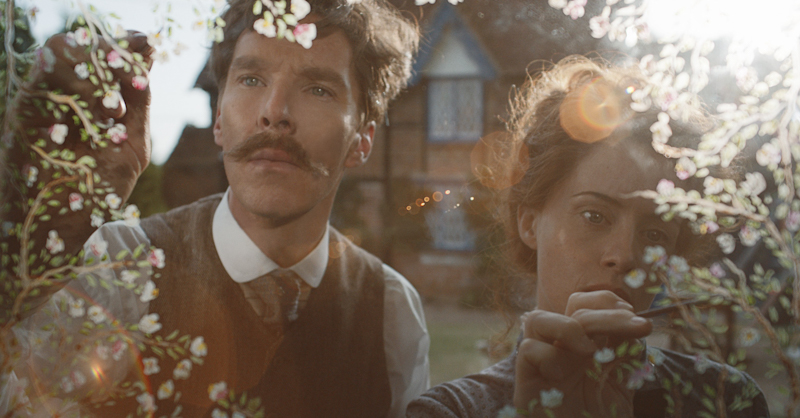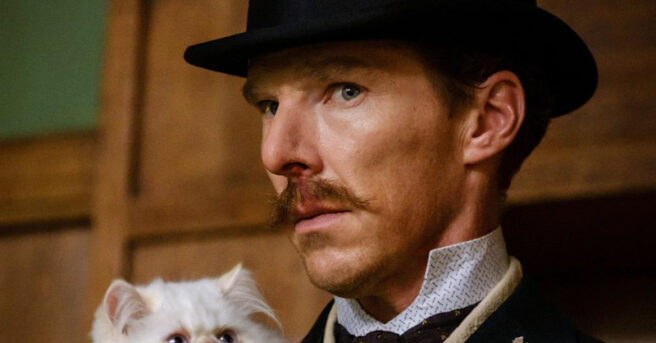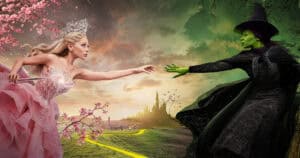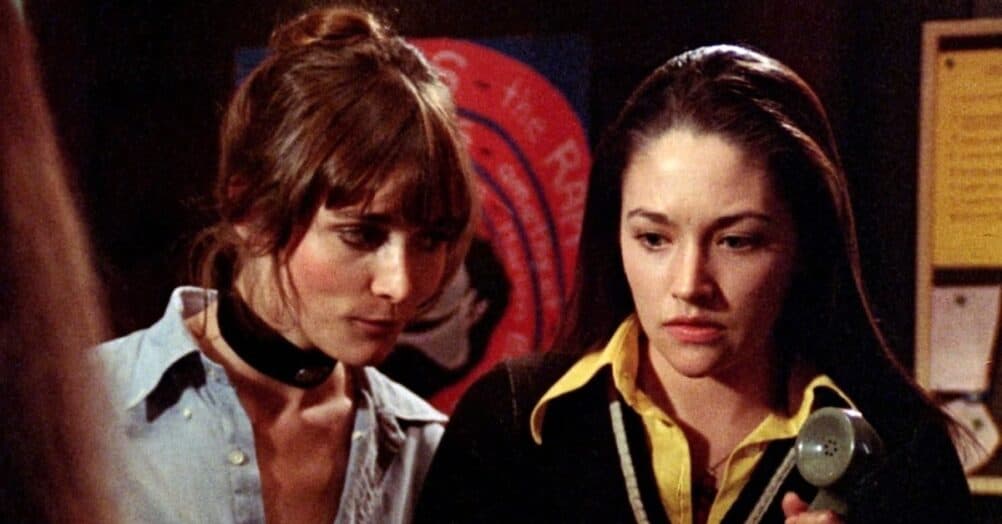PLOT: This biopic tells the life story of artist Louis Wain, who rose to prominence thanks to his unique portraits of cats.
REVIEW: The Electrical Life of Louis Wain is one of those movies that comes out of the gate so fiercely confident in its style and tone of voice that if you aren’t immediately repelled by its flights of fancy, you’ll instantly fall in love. That’s what makes it such a crime that when it comes time to shift gears and to tell the full story of its peculiar, tragic central figure, its transcendence takes a sharp dive into a crash landing that leaves it emotionally unengaging and narratively flat.
As much as I mean that latter part, there is no denying that director Will Sharpe (who co-wrote the script with Simon Stephenson) is a visionary who clearly has a passion for artist Louis Wain, wanting his movie to feel like taking into the mind of the visionary himself. Wain (played by Benedict Cumberbatch), an incredibly gifted artist renowned for being able to capture the likeness of everything around him, was an eccentric in pretty much any sense of the word, and the movie tries to capture his whole life story — which includes his stardom that came from his immense output of artwork featuring cats.
Filmed in an unconventional 4:3 style, Sharpe’s vision has a painterly approach that’s befitting of the unconventional man. With such a focus pulled onto the gorgeous costumes and set design, it’s easy to feel swept up in this whimsical depiction of 19th-century England. Wain, a peculiar man with many interests even outside of art, doesn’t quite grasp how important it is that he, the only man in a house full of sisters during this time, should buckle down and get an actual job. He would rather travel the country, and draw pictures for a local newspaper (run by Toby Jones), crafting incredible caricatures and lifelike portraits in rapid time, often from memory. As is the case with a lot of visionaries, no one quite gets him or his work, which is actually understandable given that Wain doesn’t make himself easy to understand at all. Socially awkward and driven by his work, he contains himself to his studies of all things that interest him and nothing much else.

These early moments couldn’t help but remind me of last year’s wonderful Personal History of David Copperfield, with a modern sense of humor weaved into an almost fantastical story that has a certain reverence and romantic view of the time period. Cumberbatch brings the same level of wit to the genius of Wain as he did, say, his Sherlock Holmes, in this case finding the humanity in his eccentricity. The same goes for Claire Foy as his family’s governess, Emily Richardson, who in being a little odd herself is the only one to see the brilliance of Wain, acting as his ultimate source of inspiration.
It’s in these moments together where Sharpe and Stephenson mine the real gold of Wain’s story. While it’s easy to sense it’s going through a bullet point list of Wain’s key life events, they still find the story underneath of where an artist like Wain finds true inspiration. That comes through in the visual language of the movie, with one montage of their brief married life together before her eventual passing capturing the beauty of the seasons like a stunning Victorian-era painting, the framing placing them in the middle of rich strokes of vibrant colors amid natural landscapes (see a screengrab below of one frame). Even if there is a by-the-numbers approach to the story, it’s more than worth the watch as a beautifully filmed and acted examination of an artist finding the heart of his work, with a wonderful story of a romance between two outsiders who have found their missing piece in each other. It felt like a crime to have watched it via the digital screener sent by distributor Amazon, the resolution of which topped out at what was likely a middle ground between VHS and DVD.
After losing his wife, Wain found success in his portraits of cats (many based on the pet cat of he and Emily’s, Peter), which personified and found the silliness in their behavior. These pictures were so popular, they can actually be thanked for the general boom in popularity of the domestic cat. Every funny cat video on the internet has Wain to thank, in essence. But as fun of a plot point as that is, this is the point where the movie’s downward turn coincides with Wain’s own tragic life turn, spurned by debt and his own declining mental health.

It’s here where the filmmakers begin to lose grip on the movie they’re telling to increasingly unfortunate, and equally uncaptivating results. Tonally, Sharpe struggles to navigate the turn from the silly, whimsical nature of the first half with the sensitive material at hand. In the respect and admiration had for the man by everyone involved, navigating the landscape of Wain succumbing to schizophrenia is too tricky for them to handle. There is one particular moment on a ship (Wain supposedly had recurring nightmares of drowning), and while hallucinating the ship sinking, the scene ends with a ship worker awkwardly opening the door to see Wain muttering and crying to himself in the middle of the room, urine on his pajamas. The scene is upsetting and clearly meant to shine a light on his tragic state, and yet the frame and rhythm of the scene feel more in line with comedy.
While not always able to make that transition from charm and romance to the more dramatic scenes, with much of that charm and romance have now gone from Wain’s life, so too does the movie succumb to its Wikipedia-like storytelling. While the first half was able to get away with thanks to sheer energy and vision, this latter half plays like any typical biopic where we’re meant to get a glimpse into the life of this man, but with nothing being said about him. The next several decades of his life after Emily are ticked off the list, with any trace of visual spark lost to the wind.
Even his work with cats, as well as his obsession with electrical waves (hence the title, and addressed in the narration by Olivia Colman), feel like random details sharing screen time with every other aspect of his life, such as trying to stay financially afloat with his sisters and his time in an asylum. Across it all, Cumberbatch remains a marvel, not often overplaying Wain, but as naturally as possible gliding into his deteriorating mental state in a way that doesn’t feel cloying. Even when the movie descends into rudimentary biopic territory, he always manages to stand out.
The third major player is Andrea Riseborough as Wain’s elder sister Caroline, whose intimidating demeanor can often juxtapose hilariously with Cumberbatch, and she too remains great throughout. But the performances can’t recover a disappointing final half, which never lives up to the earlier moments and feels like obligatory storytelling from filmmakers who knew the life of Wain is a story demanding to be told, but don’t always succeed in telling it. Yes, Wain’s story is interesting and should be introduced to those who are unfamiliar. But while the first half stakes such a strong, captivating identity, the rest of the film gets too comfortable in the look and feel of too many period-set biopics, failing to live up to the endlessly creative and gifted mind of the man at the movie’s heart.





















Follow the JOBLO MOVIE NETWORK
Follow us on YOUTUBE
Follow ARROW IN THE HEAD
Follow AITH on YOUTUBE